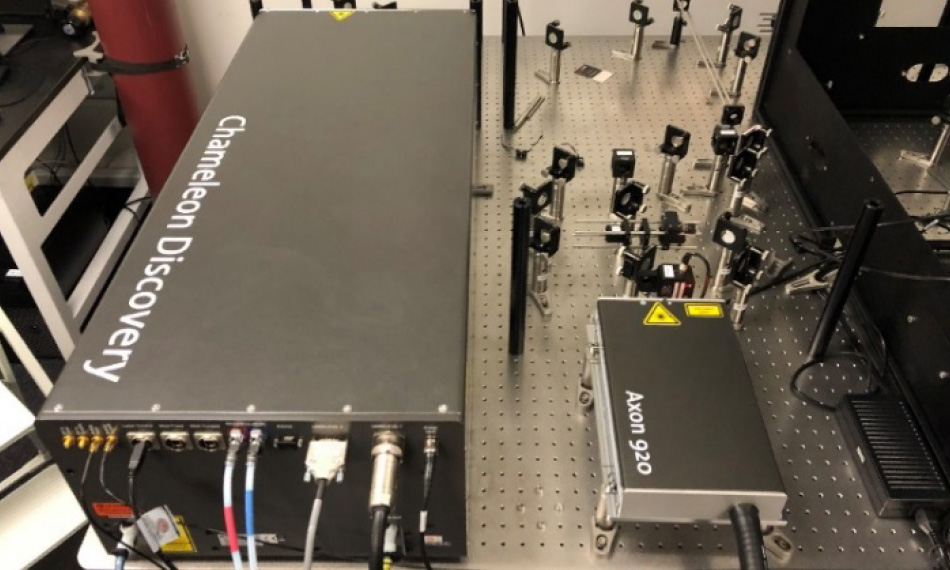ETNew Robot Fish Swims Like the Real Thing
An autonomous, self-contained robot is designed to move like a fish. Credit: YouTube MIT View full size image
Robot fish could one day be enlisted for undercover science missions.
A soft-bodied robot that looks and swims like a fish was unveiled by researchers at MIT this week; they say something like it might be able to infiltrate schools of real fish and gather data about their behavior.
The autonomous robot swishes side-to-side underwater as different parts of its body are inflated and deflated with a fluid stored as a gas onboard, the creators explained in a video. The result is a flexible robofish can execute escape maneuvers just as quickly as a real fish can — turning its body in a mere 100 milliseconds. [The 6 Strangest Robots Ever Created]
For years roboticists have been working on durable, flexible bots that mimic other squishy creatures, such as earthwormlike robots that could survive blows from a hammer and octopus-inspired bots that could squeeze into small places for exploration or search-and-rescue operations.
The newly revealed robot belongs to a long line of fish-inspired creations, including RoboTuna, an underwater automaton with 2,843 parts controlled by six motors that came out of MIT in 1994.
Since the new fish robot is self-contained, it does need some hard parts inside its soft body. The “brains” of the fish, or all of its rigid pieces of hardware, are stored at the head, while the robot‘s lower half and tail are more pliable, the researchers explained. The team used a 3D printer to make the molds for casting the fish’s silicone rubber parts.
In addition to greater flexibility and durability than their rigid counterparts, soft robots may be safer for humans.
“As robots penetrate the physical world and start interacting with people more and more, it‘s much easier to make robots safe if their bodies are so wonderfully soft that there’s no danger if they whack you,” Daniela Rus, director of MIT’s Computer Science and Artificial Intelligence Laboratory, said in a statement.
There is at least one practical drawback to the robot in its current iteration: It exhausts its supply of carbon dioxide gas after just 20 or 30 escape maneuvers. The researchers hope a next-generation version of the fish will be able to swim for a half-hour straight, using pumped water instead of carbon dioxide to inflate the channels.
A description of the fish robot is free to read online in the inaugural issue of the journal Soft Robotics this month.
Follow Megan Gannon on Twitter and Google+. Follow us @livescience, Facebook & Google+. Original article on Live Science.
自動翻譯僅供參考
機器魚能像真魚一樣游泳
ETNew機器魚游動像真正的Thing
一個自主的,獨立的機器人設(shè)計用于將像一條魚。圖片來源:YouTube的麻省理工學(xué)院
機器魚有一天,被征集服現(xiàn)役臥底科學(xué)任務(wù)。
本周麻省理工學(xué)院的研究人員揭開了一種看上去像魚一樣游泳的軟體機器人,他們說類似的東西可能會滲透到真正的魚的學(xué)校,并收集有關(guān)他們行為的數(shù)據(jù)。
的自主機器人swishes一側(cè)到另一側(cè)水下作為其身體的不同部位進行充氣和放氣與作為氣體儲存在液板載,創(chuàng)作者在視頻解釋。其結(jié)果是一個靈活的機器魚可以很快速執(zhí)行逃生演習(xí)作為一個真正的魚 mdash;轉(zhuǎn)動它的身體在短短100毫秒。 [6奇怪的機器人有史以來The 6 Strangest Robots Ever Created這可能擠入小地方進行勘探或搜索和救援行動 NBSP;
新發(fā)現(xiàn)的機器人屬于魚靈感的創(chuàng)作,包括RoboTuna,水下自動機2,843份附帶6馬達控制的長行從麻省理工學(xué)院在1994年。
的由于新魚機器人是獨立的,但它確實需要它柔軟的身體里面的一些堅硬的部分。在 大腦 魚,或它的所有剛性件硬件的,被存儲在頭部,而機器人的下半部分和尾部是更柔韌,研究人員解釋。研究小組利用三維打印機,使模具鑄造魚的硅橡膠配件。
除了更大的靈活性和耐用性比剛性同行,軟機器人可能會更安全對人類。
由于機器人滲透到物理世界并開始與人交往越來越多,它更容易讓機器人安全的,如果他們的身體是如此的奇妙柔軟,有沒有危險,如果他們捶你, 丹妮拉羅斯,麻省理工學(xué)院的主任大局;計算機科學(xué)與人工智能實驗室,在一份聲明中說。
至少有一個實際的缺點在當(dāng)前迭代的機器人:它耗盡其供應(yīng)的二氧化碳?xì)怏w后,僅有20或30逃生演習(xí)。研究人員希望的 NBSP下一代版本,魚就可以游了半小時直,使用,而不是二氧化碳泵水膨脹通道.
-
機器人
+關(guān)注
關(guān)注
211文章
28525瀏覽量
207576
發(fā)布評論請先 登錄
相關(guān)推薦
智能體已經(jīng)能像人一樣刷視頻了?國內(nèi)聯(lián)匯科技OmAgent智能體試用!

安泰功率放大器如何驅(qū)動20kHz水聲換能器超聲驅(qū)魚

請問studio中可以像裸機一樣調(diào)用定時器中斷嗎?
ATA-L8水聲功率放大器在超聲驅(qū)魚中的作用是什么

八爪魚微電子榮膺雙項葵花獎,“感算一體”賦能智能家居行業(yè)





 機器魚能像真魚一樣游泳
機器魚能像真魚一樣游泳












評論